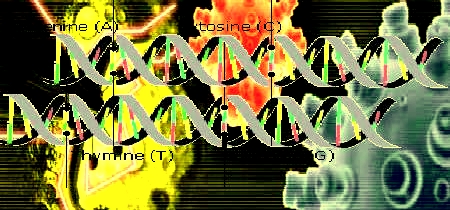BY LETTER
Genestick
Technology > Application > Agriculture
Technology > Technology Type or Material > Drytech/Hylotech
Technology > Application > Everydaytech
Technology > Technology Type or Material > Gengineering
Technology > Technology Levels > High Tech / Hitech
Technology > Technology Type or Material > Nanotech
Technology > Technology Type or Material > Organic/Biotech
Technology > Technology Type or Material > Drytech/Hylotech
Technology > Application > Everydaytech
Technology > Technology Type or Material > Gengineering
Technology > Technology Levels > High Tech / Hitech
Technology > Technology Type or Material > Nanotech
Technology > Technology Type or Material > Organic/Biotech
 Image from Bernd Helfert modified by Steve Bowers |
General classification for any of various compact genetic analysis and engineering devices. Most widely employed by citizens of the Zoeific Biopolity, but also commonly seen in Pan-Sophontist and bioist enclaves as well as in the toolkits of hobbyists everywhere.
A basic genestick consists of a compact cylindrical housing about 10cm long and usually no more then a centimeter in diameter at its widest point. One end of the unit contains an array of microscale sampling units designed to extract cellular samples in a variety of ways, including skin scrapings, blood and fluid extraction, tissue micro-cores, and even air and soil intake. The central core of the genestick contains a complex of micro and nanoscale laboratory spaces and an array of devices able to both analyze and manipulate matter down to the molecular level. Finally, the opposite end of the unit incorporates a cubic centimeter of fast nanocomputronium, a similar quantity of memory substrate, nanoflywheel power cells, and a combination RF/optical wireless link.
Most models are rechargeable, self-sterilizing, and incorporate a small clipping mechanism to allow the device to be readily attached to clothing.
Genesticks can use their internal laboratory and computational resources to control gene expression, perform rapid chemical and genetic analysis (most DNA samples can be completely sequenced in under a minute), carry out genetic redesign and reconstruction, and (usually in the more advanced models) support basic neogenic design and DNA assembly. The onboard software suite usually includes a genetic database of several hundred thousand lifeforms, genetic analysis, modelling, and design programs, and a complete virtual environment designed to interface with the users onboard DNI systems and allow them to 'directly' observe and manipulate genetic material, in a 'hands on' manner.
In the event that the unit's onboard library and processor systems are insufficient for the task at hand, wireless linkages can be established to external data and computing resources either carried by the user or available through local planetary, system, and Known Net connections.
Basic genestick units are typically designed to make changes to a single fertilized egg or reproductive cell, either extracted by the genestick or synthesized and then re-implanted into a host organism or artificial womb or growth medium. More advanced or 'professional grade' units also contain a small detachable reservoir of self-replicating 'delivery modules' usually of microbial or viral size, that can be loaded with newly created or redesigned genetic templates for injection into an external environment or organism. Once introduced the modules replicate throughout the target, enter each of its cells and alter their genetic coding and/or gene expression mechanisms to produce the desired change or changes. Templates for additional reservoirs or delivery modules are readily available and can be used by most public or home nanoforges. More advanced genestick models may occasionally incorporate a compact, limited-function nanoforge to synthesize new delivery modules directly.
Genesticks may be referred to by a number of colloquial or brand names including such well knowns as 'lifestick', 'god rod', and Lifewriter(TM). While originally created to manipulate biological materials, over time similar devices have been developed for the purpose of altering cybernetic, synano, and virtual/AI based lifeforms.
Appears in Topics
Development Notes
Text by Todd Drashner
Initially published on 30 March 2006.
page uploaded 30 March 2006, last modified 26 December 2007
Initially published on 30 March 2006.
page uploaded 30 March 2006, last modified 26 December 2007






